Talking About Rafa: Maritza’s Manager In Words and Pictures
Mountaintop to Tap Five Years Out: A Journey Remembered
By Jamie Blaine
FIVE YEARS LATER: THREE WEEKS THAT CHANGED LIVES
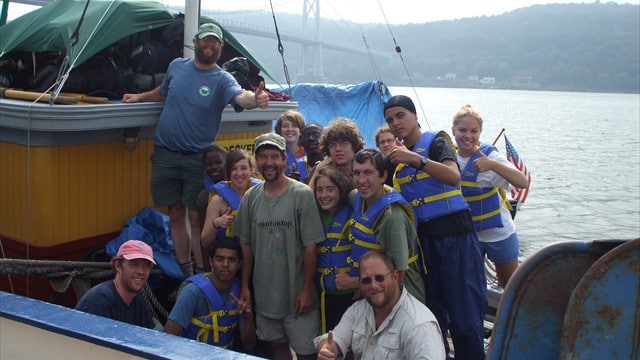
Five years ago last July, 12 high-school students set off from Belleayre Ski Resort in the Catskill Mountains on the journey of a lifetime. Three weeks later, exhausted, exhilarated, and malodorous, they walked into New York City’s Central Park to the applause of families, city officials, and startled onlookers. They had hiked and paddled over 200 miles, through wooded wilderness, open water, and paved suburb, following the route of the city’s water from its sources in the Catskill Mountains to the reservoir in the center of Manhattan, from Mountaintop to Tap. Half the students came from Sidney High School (SHS), up near the water’s sources in rural Delaware County. The other half came from the New York Harbor School (NYHS), an inner-city public high school in Brooklyn that is focused on water issues. The two groups had never met before, and their backgrounds could not have been more different. In fact, every NYHS student had been born in the Caribbean, and each had come to Brooklyn from a different island homeland.
Five years later, I set out to find the students, the teachers who accompanied them, and the planning committee members who labored for months to make the trek happen, and to ask them what impact the trek had had on their lives. The short answer is “life-changing.” The longer answer follows.
AN EDUCATION FOR ADULTS
One unexpected discovery was the profound impact the journey had, not only on the young trekkers but on the adults. For one thing, it made them ask fundamental questions about the nature of education and about their role as teachers.
“The trek forever changed my perspective on what true education is, and should be, all about,” wrote Todd Paternoster, then a teacher at SHS. “It helped me become a better parent, helped me solidify my understanding of how we are all connected, and helped me realize the importance of clean, fresh, and abundant drinking water.”
“The trek,” wrote Ed McGee also of SHS, “made me understand how we forget as teachers what it is like to be young adults.”
The teachers took great pride in the accomplishments of their students under extremely difficult conditions.
“I’ve rarely been prouder of a group of kids than I was on that trip,” wrote Jennifer Ostrow, who left NYHS to start her own middle school. “It reinforced my belief in experiential education and furthered my understanding of the watershed.”
“One of the biggest impacts that the trek had on me is that it made me love my students even more than I already did love them,” wrote former NYHS teacher Sara Scott. “I do not think that I was ever more proud of my students than I was during and after the trek. It solidified for me that a lot of the stereotypes about ‘urban youth’ (and their abilities or shortcomings) are simple-minded and short-sighted.”
“The sheer fact that all these people actually hiked, biked, boated, and camped their way from the watershed to the city,” wrote John Schwartz of New York City’s Department of Environmental Protection (NYCDEP). “Wow!”
For the students, memories revolved around hardships and friendships, new experiences and transformed perspectives, laughter and tears.
LEARNING ABOUT NATURE
Most of them had never lived so close to nature, and they had thought little about it.
“Quiet times hiking or resting at night caused me to notice the little things — to notice what the world has besides shopping malls and highways paved through the forests.” — Sarah Pate (SHS)
“Climbing the first mountain was the first time I got to experience [anything like] that, and to me, it was just amazing.” — Jeriel Stafford (NYHS)
“The view of the valley from the top of Slide Mountain was breathtaking.” — Natalie Bloomfield (NYHS)
LEARNING ABOUT EACH OTHER
Nor had they been so far outside their comfort zones or met such a range of people.
“Physically living with and talking to others from other cultures and walks of life is something I will always carry with me.” — Sarah Pate (SHS)
“The memory that sticks out the most is when I jumped in the river, encouraged by all the other trekkers. I was very afraid to drown, as I did not know how to swim. However, I think that I was more afraid to trust the other trekkers, as most of them were still strangers to me. Then under water, I felt my muscles tense, and the cold water felt like needles in my body. I lost it. I was drowning in deep — very deep — water. Suddenly, I felt warm hands reaching out to help me, and today I am proud of myself for taking such a risk. I trusted each and every one of them, and our relationship blossomed from then on.” — Leydi Basilio (NYHS)
“The thing that stands out the most in my mind after five years is the friendship I built with Leydi. It is amazing that two people can grow up in complete opposite environments yet have so much in common.” — Marissa Morton (SHS)
“I find that what stands out most to me are all the different times we shared together, good and bad, and how we always got through it.” — Sarah Place (SHS)
“After five years, I still remember the early morning hikes and Asha’s huge heart!” — Natalie Bloomfield (NYHS)
LEARNING ABOUT THEMSELVES
The trek “changed who I am today,” wrote Marissa Morton of SHS, who came home with stress fractures in both feet. “It motivated me to go after my dreams.”
“Sometimes I catch myself thinking back and wondering, ‘Did I really do all that?’ It’s just surreal.” — Robert Loibl (SHS)
“I got to experience a whole different world from what I’m used to.” — Jeriel Stafford (NYHS)
“The trek changed my life. I have more courage to challenge myself and my limits, and if I ever have doubt, I many times find myself saying in my mind, ‘Hey, I climbed three mountains and rowed 40 miles, I can do this.’” — Sarah Place (SHS)
LEARNING ABOUT WATER AND THE PEOPLE WHO SHARE IT
Of all the people the students met on their journey, none had a greater impact on them than Margaret Smith Dolan, who told them how her family had lost their home and farm to eminent domain more than half a century earlier when New York City flooded the valley to create the Neversink Reservoir. She embodied in a powerfully personal way the sacrifices that many people made to provide the city’s water. It is not easy to humble teenagers. Margaret did.
“We asked Margaret why she wasn’t mad that her house was taken away. Margaret replied that she knew something good was going to come out of building the reservoir.” — Asha Armstrong (NYHS)
“The trek changed my perspective about NYC water completely. . . . It kills me to see how much water is wasted, particularly during the summer when the fire hydrants are left open for hours, because I know the history behind it. So many families lost everything for us to have water, and I think that, out of respect, the least we can do is conserve that precious resource before it goes missing.” — Leydi Basilio (NYHS)
“The trip helped shape my opinions about the connection between both major parts of New York State.” — Robert Loibl (SHS)
“Before this trek, I never once questioned where the water I drink came from, but after learning about what so many people gave up for New Yorkers to have clean drinking water, I’ve definitely tried to show my appreciation by drinking more tap water and walking with a canteen.” — Natalie Bloomfield (NYHS)
RIPPLING OUTWARD: THE TREK’S CONTINUING IMPACT
From its inception, the trek aimed to provide much more than a unique living and learning experience for 12 high-school students. Its goal was to create a ripple effect by having the trekkers become spokespeople for understanding and protecting New York City’s water supply and the watershed that produces it and by establishing a program that others could replicate. It succeeded on both counts.
“It made me realize the power that people who care about something — in this case the NYC Water Supply system — can have. And to put that power and energy to use to educate and inform others — through the journals, the exhibits, the school assemblies, and the movie — is nothing short of amazing.” — Aaron Bennett, then at the Catskill Center for Conservation and Development (CCCD)
“The collaborations and the connections everyone had were like long tentacles connecting so many different people along the NYC watershed.” — Christina Medved, Stroud Water Research Center.
“Being able to help inspire students to that degree is something that I will be proudest of in all my achievements. Immediately after the trek, we at Sidney held a showing of the film for the entire student body, and afterward the students gave a PowerPoint presentation to the school on the importance of preserving our most precious resource. We also had donated to us 500 reusable drinking bottles, which we passed out to every kid in school. This trek inspired many more than 12 students; it inspired hundreds.” — Todd Paternoster (SHS)
“I think about the trek all the time. Most of my expedition planning goes back to the strategies I developed for planning the on-water portion of the trek. I also appreciate the opportunity to experience the connection that upstate and downstate share. When I talk about the trek, I still get faces of amazement as I describe how 12 students followed the water to the big city. To this day, there is always a cold pitcher of tap water in my fridge.” — Tizoc Gomez (NYHS)
Last summer a Boy Scout troop in Ashokan, N.Y., approached the NYC Department of Environmental Protection (DEP) about replicating the trek to commemorate the 100th anniversary of the troop. Because Kim Estes-Fradis and John Schwartz of NYC DEP had been so deeply involved in planning the earlier journey, they were asked to ensure the success of the second trek. Schwartz oversaw its completion, for which he was named NYC DEP’s employee of the month for August 2012.
In the summer of 2011, Christina Medved put together the Brandywine Trek, a one-week journey down that river based on her experiences in New York. The Coatesville Youth Initiative, the Center’s partner in the venture, has now taken responsibility for the Brandywine Trek, which will set off for the third time in the summer of 2013.
Peabody Award winner Kent Garrett made a Mountaintop to Tap film for PBS. Watch it on the Mountaintop to Tap page.
The trek was featured in more than 20 newspaper and magazine articles, blogs, and television shows. Exhibits of the students’ journal entries and photographs were held at the Brooklyn Public Library, Queens Museum of Art, Catskill Center for Conservation and Development, New York Harbor School and Sidney High School. The show remains on exhibit at Stroud Water Research Center. The film that Peabody Award winner Kent Garrett made for PBS can be viewed on the trek website.
STARS OF WONDER
I was unable to locate Sean Soto of NYHS for this article, but the journal entry he posted on the trek’s first morning captures the wonder the students felt on this journey and the awe with which the adults came to hold them at the end:
“When I woke up this morning I could not stop thinking about the stars I saw last night. I live in Brooklyn, and at night you do not really see stars . . . we have street lights lighting our streets, while up here you have these beautiful stars to light your environment.”
Quick Links:
- Learn about the Brandywine Trek, which built on the success of Mountaintop to Tap, and took the trekkers from the headwaters to the mouth of the Brandywine River.
- Read the trekkers’ full responses to the author’s questions in Mountaintop to Tap Five Years Out: In Their Own Words
Remembering Jean Peirson
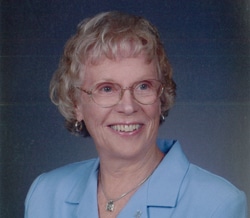
Jean Peirson, a beloved friend of, longtime volunteer, and former employee at Stroud Water Research Center, passed away June 27, 2012. She was 85 years old.
She was preceded in death by her husband Stewart D. Peirson, who was also known as Buck. They were married for 45 years.
She attended West Grove Elementary and graduated from Unionville High School, and despite not having been formally trained as a scientist, her eagerness to learn and help in any way possible made her a welcome addition to the Stroud Water Research Center family.
“I first met Jean Peirson in 1973, my first summer doing research here at Stroud Water Research Center. I was a 22-year-old graduate student living in Philadelphia. She was a technician in the chemistry lab and was working on projects supervised by Drs. Ruth Patrick and Robin Vannote,” says Director Bern Sweeney.
“Jean was always cheery and pleasant, and she quickly became like a mom to me. She had daughters of her own, but Jean and her husband, Buck, treated me like the son they never had.”
From helping Sweeney find his first Chester County apartment to sharing jars of her secret-recipe mustard with him, Peirson was, according to Sweeney, “just too kind to me.” He adds, “She was also a great cook.”
When Sweeney was appointed director of the Center in 1989, he was 38 years old. “I benefited from a lot of wise advice she gave me, and when she retired, I had a standing invitation to stop over on Friday nights for dessert, and she continued to give great counsel.
“She’ll be missed by all of us who knew her, but she’ll be remembered for not letting her lack of formal training stop her from excelling in an assisting role in our rigorous work in the chemistry lab. And she cared about the people here and our mission — so much so that she wanted to be a part of the Center whether as an employee or a volunteer.”
The Water’s Edge: An Evening in Review
By Diane Huskinson
THE 2012 RECIPIENT OF THE STROUD AWARD FOR FRESHWATER EXCELLENCE™
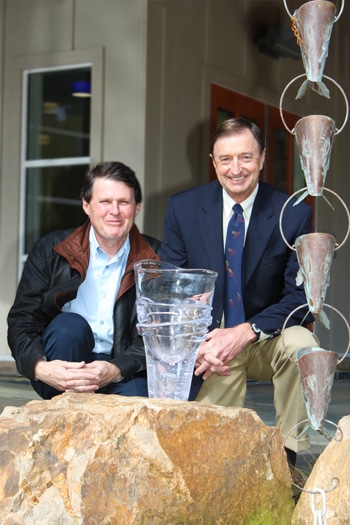
Under the diffuse starlight of an evening sky on Oct. 18, the ornamental beauty of Longwood Gardens provided the backdrop for The Water’s Edge. This year, the highlight of Stroud Water Research Center’s annual fundraising gala was a lecture by John Briscoe, Ph.D., the Gordon McKay Professor of the Practice of Environmental Engineering, Professor of the Practice of Environmental Health at Harvard University, and this year’s recipient of the Stroud Award for Freshwater Excellence™.
The prestigious award, also known as the SAFE Water Award™, is awarded for outstanding achievement to those who contribute broadly to the conservation and protection of fresh water. A unique glass vase designed by Simon Pearce to resemble the flow of water accompanies the award.
Briscoe has dedicated his career to issues of water, other natural resources, and economic development. Currently, he directs the Harvard Water Security Initiative a collaborative research effort that identifies institutions, infrastructure, and technologies to build water-secure countries. He’s also worked as an engineer in the government water agencies of South Africa and Mozambique, an epidemiologist at the Cholera Research Center in Bangladesh, and a professor of water resources at the University of North Carolina. In his 20-year career at the World Bank, he held high-level technical and managerial positions, shaping its governance and strategy.
Additionally, Briscoe was a founding member of the major global water partnerships, including the World Water Council, the Global Water Partnership, and the World Commission on Dams. He has served on the Water Science and Technology Board of the National Academy of Sciences and the Global Agenda Council of the World Economic Forum, and he currently serves as a member of the Council of Distinguished Water Professionals of the International Water Association.
In his lecture, Briscoe noted the importance of having scientists “on tap” to provide critical data in the effort to address water issues. “We need a heavy investment in the sort of work being done so brilliantly at Stroud,” he said.
SPOTLIGHT ON CURRENT PROJECTS
Stroud Center Director Bern Sweeney, Ph.D., who this year celebrates his 40th year at the Center, shared some of the brilliant work Briscoe was referencing. “We are still all about fresh water. That has been our focus from day one,” said Sweeney, but the Center’s reach has grown significantly in the last 45 years, expanding its research beyond its backyard in Chester County to 233 rivers around the world.
Sweeney went on to describe a few of the most exciting projects under way at the Center:
- The Metaecosystems Project: Funded by National Science Foundation (NSF), this project looks at how the chemistry and, in turn, the bacteria change along a gradient in a stream from headwaters to the large river.
- Mountaintop Mining and Valley Fill: Stroud Center scientists are studying the effects of dumping mountaintops, which have been removed for coal extraction, into stream valleys below in Kentucky and West Virginia by testing the toxicity of the stream water downstream of the valley fill.
- Fracking Marcellus Shale for Natural Gas: Stroud Center scientists are testing the toxicity of spent fracking water used for drilling gas wells in Pennsylvania.
- Christina River Basin Critical Zone Observatory (CRB-CZO): One of only six CZOs in the United States, the CRB-CZO was established in 2009 by the National Science Foundation (NSF) in cooperation with the Stroud Center and the University of Delaware to research questions relating to climate change. Among other things, scientists are using real-time sensors to help determine how different land uses affect the export of sediments and organic substances and chemicals by streams and rivers to the Delaware River Estuary.
- Earth Cube: Another NSF-funded project, Earth Cube integrates data management across all geosciences, and now it will incorporate data from all the CZOs, including data that’s being collected by real-time sensors in the field.
- Water Quality Assessment Using DNA Barcoding: Stroud scientists are leading an effort to pilot test water quality monitoring in Pennsylvania and California using species-level data on macroinvertebrates by identifying specimens through DNA barcoding of the CO1 gene.
- Public Outreach: With the establishment of the Stroud Center’s new “green” LEED-certified building, the Moorhead Environmental Complex, the Center now has a dedicated space to house the departments of education, communication, public outreach, marketing, development, finance, and facilities. With its innovative sustainable features, the Complex will also work as a research and teaching tool that will serve policymakers and generations of environmental stewards.
- Wikiwatershed®: This suite of web-based tools to assist citizens in managing water resources includes Model My Watershed®, Monitor My Watershed (which utilizes the Leaf Pack Monitoring Kit), and Manage/Restore My Watershed.
AN EVENING TO REMEMBER
After Sweeney’s remarks and Briscoe’s lecture, some 200 guests enjoyed a dinner of fall harvest fare and conversation in Longwood Garden’s Conservatory, a stunning glass greenhouse filled top to bottom with vibrant blooms year-round.
The Water’s Edge was made possible by generous sponsorships from presenting sponsor Wilmington Trust; premiere sponsors Alice and Rod Moorhead; lead sponsors The Curran Foundation, Dansko, Inc., DuPont Company, Exelon Power, Fresh Start Development Company LLC, The Kookaburra Foundation, and Longwood Gardens; and key sponsors Franny and Franny Abbott, Gawthrop Greenwood, PC, Glatfelter Insurance Group, Glenmede, Jock Hannum, Merrill Lynch, NewSpring Capital, Northern Trust of Delaware, Mr. and Mrs. Richard E. Reigel, Jr., Anne Stroud, Lisa and Dixon Stroud, and Boo and Morris Stroud, Mr. and Mrs. William R. Wister Jr.
Thanks and Farewell
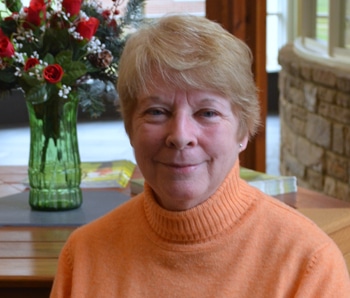
It is with mixed emotions that we announce that Shelby VonTill, a key administrative assistant at Stroud Water Research Center, will retire on December 31, 2012 after just over 33 years on the job.
Although hired initially as the Stroud Center’s secretary, her position morphed over the years to include a huge array of things. She oversaw ordering and paying for everything associated with our grant and contract work in both science and education, as well as details such as the human resource activities and payroll of those doing that important work.
Despite the many challenges that naturally arise in such a role as hers, Shelby remained steadfast and constant. She was always punctual, dependable, cheerful, and approached assignments with a great attitude. She helped shape the Stroud Center, and it is certainly better off because of her long-term presence and hard work. All of us here at the Stroud Center wish Shelby a wonderful retirement!
In the News
Medved Presents at Dive Deeper Summit
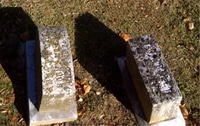
Christina Medved, education programs manager and Leaf Pack Network® administrator, presented at the Dive Deeper Summit, hosted by Penn State Extension on September 27, 2012, in Harrisburg, Pa. To learn more, read “Dive Deeper Summit Participants Eager to Gather Again Next Year.”
Aufdenkampe Braves Things That Go Bump in the Night
The National Science Foundation published a spooky Halloween feature on scientist Anthony Aufdenkampe’s recent graveyard exploration as part of his work on the Christina River Basin Critical Zone Observatory. Check out “Science on the Graveyard Shift.”
Newbold Voices Concerns Over Pipeline Approval
Stroud Center scientist Denis Newbold spoke publicly about concerns over a permit the Department of Environmental Protection has granted Williams Transcontinental Gas and Pipeline Co. Read the full story, “Officials unhappy with pipeline approval”
Williams Shares Simple Stormwater Management Solutions
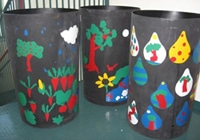
Education Programs Manager Vivian Williams addressed an audience at the Radnor Township Building on Nov. 29, 2012, explaining how rain barrels and other micro solutions can help reduce stormwater runoff. Read “Storm-water expert addresses micro solutions”
Stroud Scientists and Educators Present
Our scientists and educators engage in both scientific and public forums to share their findings, increase awareness, and create a public dialogue centered on the protection, preservation, and restoration of watersheds everywhere. The following highlights recent presentations.
White Clay Creek Symposium at the Stroud Center
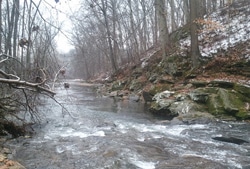
Stroud Water Research Center hosted the White Clay Wild and Scenic Symposium in September. The symposium was organized by the White Clay Wild and Scenic Management Committee in conjunction with Stroud Water Research Center (special thanks to Christina Medved), the Delaware Nature Society, and the University of Delaware’s Water Resources Agency. More than 60 scientists, environmental managers, and educators attended. Presentations focused on watershed research and management activities within the White Clay watershed. Stroud Center scientists presented research on sediment sources to the creek (Dr. Diana Karwan) and fish dispersal and growth (Dr. William Eldridge). Read more about the symposium
Aufdenkampe Presents Critical Zone Observatory Findings
In October, Dr. Anthony Aufdenkampe traveled to Ascona, Switzerland for the 5th International Workshop on Soil and Sedimentary Organic Matter Stabilization and Destabilization. Aufdenkampe presented a lecture titled “Whole watershed quantification of net carbon fluxes by erosion and deposition within the Christina River Basin Critical Zone Observatory (CRB-CZO).” It summarized research findings from the NSF-funded CRB-CZO with colleagues at Stroud Water Research Center (D. Karwan), University Exeter (R. Aalto), University of Minnesota (K. Yoo and B. Wenell), and the University of Delaware (C. Chen).
Arscott Shares New York City Drinking Water Research
Also in October, Dr. David Arscott attended the second Catskills Environmental Research and Monitoring Conference at Belleayre Mountain, Highmount, N.Y. The Stroud Center was invited to attend and to present our work on understanding water quality in the New York City drinking-water supply watersheds, a detailed six-year study funded by the EPA Safe Drinking Water Act and N.Y. Department of Environmental Conservation from 2000 through 2006.
Educators Have Busy Fall in New Green Building
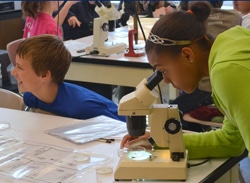
We are very happy to report that our new education classroom and laboratory in the Moorhead Environmental Complex has been busy this fall. Nearly every Tuesday, Wednesday, and Thursday this fall, Center educators Christina Medved and Libby Gregg have hosted a different school group, including Kennett High School, Sanford School, Downingtown High School, Westtown School, Charles F. Patton Middle School, Avon Grove Charter School, and The Tatnall School. School groups visit the Center to learn about stream and watershed ecology.
With the support of the LaMotte Company, Christina Medved, the Stroud Center’s education programs manager and Leaf Pack Network® administrator, attended the National Science Teachers Association Area Conference in Atlanta in October to provide a Leaf Pack Workshop and help promote LaMotte and Stroud’s Leaf Pack Experiment Kit. She also attended a National Association for Interpretation workshop with Vivian Williams, the Center’s education programs manager and program design specialist, where two programs were offered to conference attendees: “Slimy Leaves for Clean Streams: The Leaf Pack Experiment” and “Learning the Landscape through Letterboxing.”
This fall, Vivian Williams presented seminars titled “Forest Hydrology” in Lycoming Co., Pa., at the Women in Their Woods Conference and “Learning the Landscape Through Letterboxing” in Hampton, Va. at the National Association for Interpretation Conference. The presentations were sponsored by the Point Lookout Farmlife and Water Preserve Foundation. Williams also delivered presentations on stormwater management practices to 12 participants of the PA Master Naturalist program at the Stroud Center.



